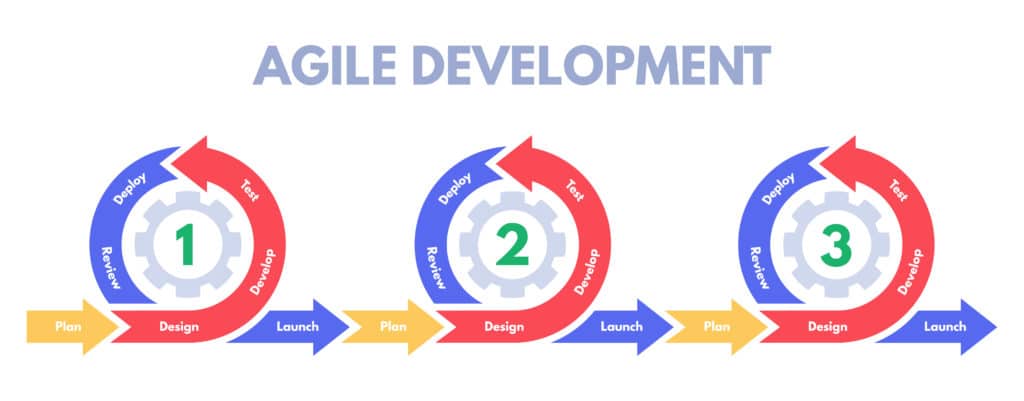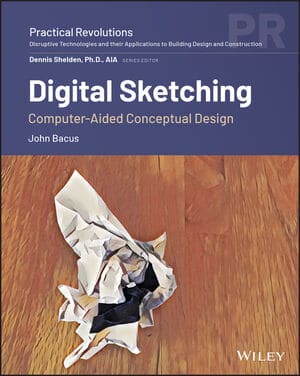Agile Is Powerful. So What Might It Look Like in Design for Construction?

- Agile Methodology is a transformative approach to software development introduced in 2001.
- Almost 86% of over 100k international surveyed software developers use Agile. Source: Hygger Blog
- Agile methods have become popular with non-software companies, products, and services that need to be flexible and responsive as quick changes accelerate in business.
- The many shared problems between software development and construction make ‘agile’ thinking during design quite valuable.
- Here, John Bacus, Vice President of Product Management, Trimble, outlines a new framework for Agile design for construction.
Note: This has been adapted from Digital Sketching: Computer-Aided Conceptual Design (pp. 19-31), by John Bacus. John Wiley & Sons, 2021. Available for purchase on Wiley,Bookshop.org, and Amazon.

Just over 20 years ago, a group of influential ‘organizational anarchists’ gathered for a weekend in Utah’s Wasatch mountains to discuss how the large, complex projects they worked on could be managed without driving everyone on the team nuts. On the whole, their projects were wickedly complex, usually delivered late, and almost always over budget. Collectively, they recognized a few common problems plagued their projects, most of which came from an imperfect understanding of the success criteria that would help them know when the work was good enough to call it done. They didn’t really know what they were building until they actually started building it.
By the time the weekend was over, they had collectively drafted The Agile Manifesto for Software Development. Now recognized as a revolutionary document in software project management, The Agile Manifesto spread rapidly and fundamentally transformed the technology world. I love it as a way of working, though — maybe because it feels more than a little similar to how design projects for construction naturally play out.
Architecture and design have much to learn from Agile development, and maybe a little to teach as well. There are enough shared problems between software and construction that some ‘agile’ thinking during design is quite valuable. Many books have been written about Agile as a software development methodology, but there’s little application of that thinking in architecture and design. Think of these principles (adapted from the original Manifesto) outlined here as a new way of thinking about design for construction, informed by the best practices of another wickedly complex industry.
What Might an ‘Agile’ Design Practice Look Like for Construction?
Client satisfaction by early and continuous delivery of valuable design
Plan on delivering a little work all the time. Don’t collect all your decisions into one giant presentation that hits both your client and the rest of your team with hundreds of new pieces of information all at once. Instead, think in a continuous delivery process.
Welcome changing requirements, even when they come late in the design
Every design begins with imperfect requirements, meaning that invariably, conditions will change from day to day. Embrace that and become a champion of changes as they appear in the project. Changes indicate the team is learning and understanding the problem they have set out to solve clearly and in more detail. Changes are evidence of the design getting better.
Deliver complete design proposals frequently
Don’t get hung up in excessive detail on any one part of the project before bringing everything else to a similar level of development. Every day, you should have the best current representation of the project ready for review by the client or for a meeting with your team where the latest design issue can be shared and issues coordinated. You will inevitably formalize some proposals more than others, but you should always have a current, best version available.
Maintain close, daily cooperation between stakeholders and other designers
Ideally, you should be talking to your client, your contractor, and the other consultants and trades on your job daily. You want them to think of you as the best source of information at all times. Don’t be annoyed when they contact you for help — that is exactly what you want them to do. And it is evidence that they respect you and your design work.
Projects are built around motivated designers who should be trusted
With no fixedly defined ideal design solution in mind at the outset, your client is really depending on the professional skill of the team and people they assembled to get the design work done. Fundamentally, they are paying for a design team to work on the design for their project until the clock runs out. They should trust the team, and try not to over-manage them.
The best design teams are integrated and co-located
Wherever possible, you should seek out opportunities to share physical studio space with everyone on the construction team. If you accept the Agile notion that the best project communication is continuous, then it makes sense to work in a situation where constant contact is possible. If physical co-location isn’t possible, explore virtual alternatives.
Credible design proposals are the best measure of progress
Nobody is impressed if you met a delivery deadline with a design that stinks. If the design proposals you champion aren’t regarded as constructible, efficient, or in any way diverging from norms and standards of practice, you will need to do a better job of selling them to the team. Or, maybe you just need to do a better job with your design.
Agile processes promote sustainable practice
I don’t use the term sustainable here to refer to green building practices but to finding a pace of design you can sustain. By switching from a rigid waterfall management style with big deliverables (and big catastrophes if the deliverable falls short) to one of continuous gradual improvement, agile designers can learn how to manage their time more humanely.
Continuous attention to technical excellence and good design enhances agility
The construction industry is distressingly full of distrust and self-preservation behavior. And yet, with very few exceptions, every person on every part of the extended team is likely motivated more by a desire to do great work they can be proud of. Look for the best in your team, and in return, give your best as well. A team continuously committed to excellence works faster, more efficiently, and is a joy to collaborate with.
Simplicity, the art of maximizing the amount of work not done, is essential
In design for construction, simplicity is more than just a way to maximize the efficiency of your work. You are also responsible to simplify the work of all those who will follow your design through execution. It usually takes a little extra work during design to make a project simpler to execute, so practice simplicity every chance you get.
The best requirements and design emerge from self-organizing teams
When you ask someone, or worse when you tell them what they should work on next, you reduce their agency and diminish their motivation. The most motivated and productive designers are those who love what they are working on and who are so committed to the overall idea that they can make their own decisions about the things they are working on without much oversight or review.
At regular intervals, the team should engage in a constructive design critique
Set the tone for critique by always keeping it positive and upbeat, even when you have devastating comments about the design proposal at hand. There are some straightforward ground rules for a successful, productive, constructive critique that I like to follow:
- Critique is not the same as criticism
- Critique the design, not the designer
- Be specific, be relevant
- Always ask the hard, obvious questions
- Critique takes practice
The design team owns the design, not an individual designer
While a single person is, of course, responsible for each individual design asset that you are reviewing, you should always claim collective ownership of the design as a whole. You are all in this together, so you should act like that.
Practice your agility
With Agile design practices you always have the ability to adapt to something new that is discovered only after you’ve completed some prior work. Every day you can tear something up that you did the day before in favor of something better that emerged overnight. Since you haven’t had time to do much work since the last time you shared, you aren’t going to have to reverse much of your work if some part of it doesn’t fly.
Want to dive deeper into using disruptive technologies and methodologies in your design practices? Read Digital Sketching: Computer-Aided Conceptual Design and the SketchUp blog.
Link to Article: https://constructible.trimble.com/construction-industry/agile-is-powerful-so-what-might-it-look-like-in-design-for-construction